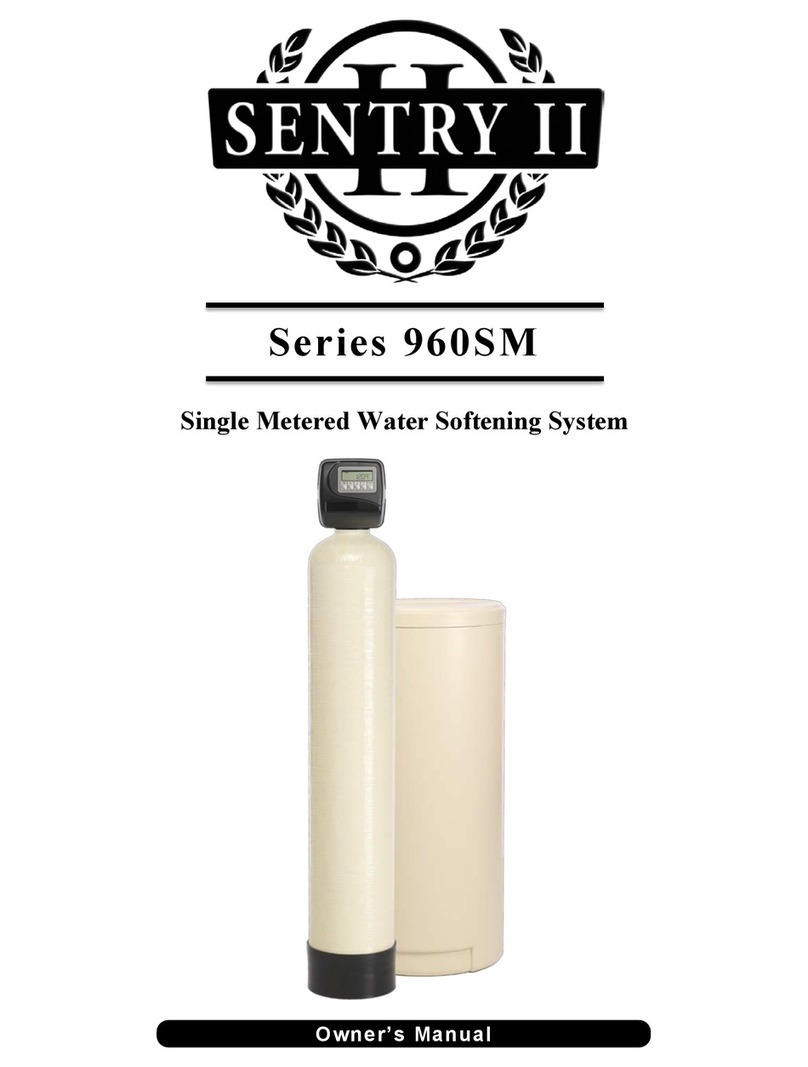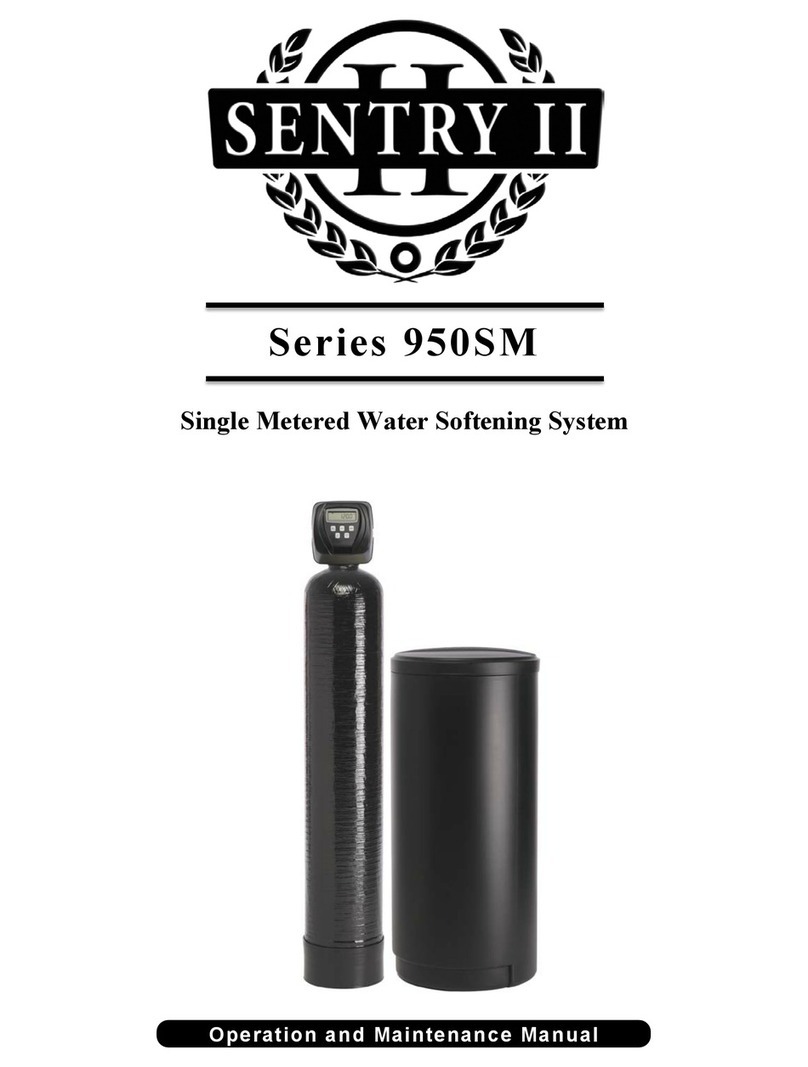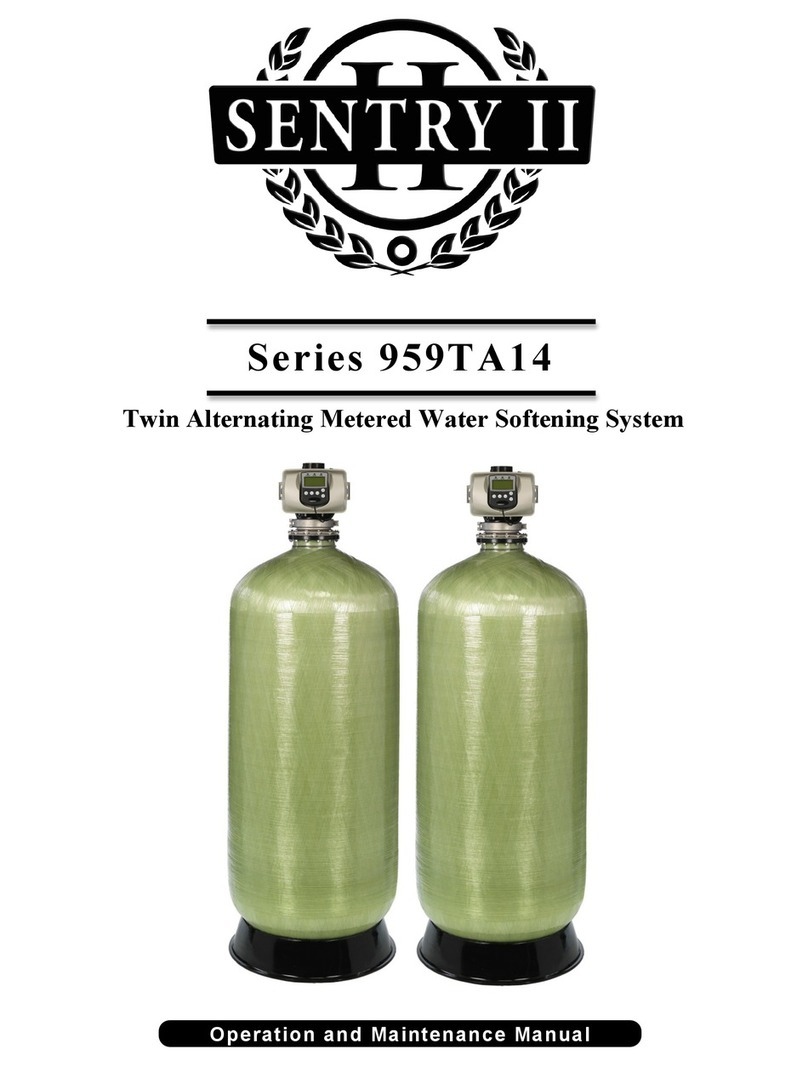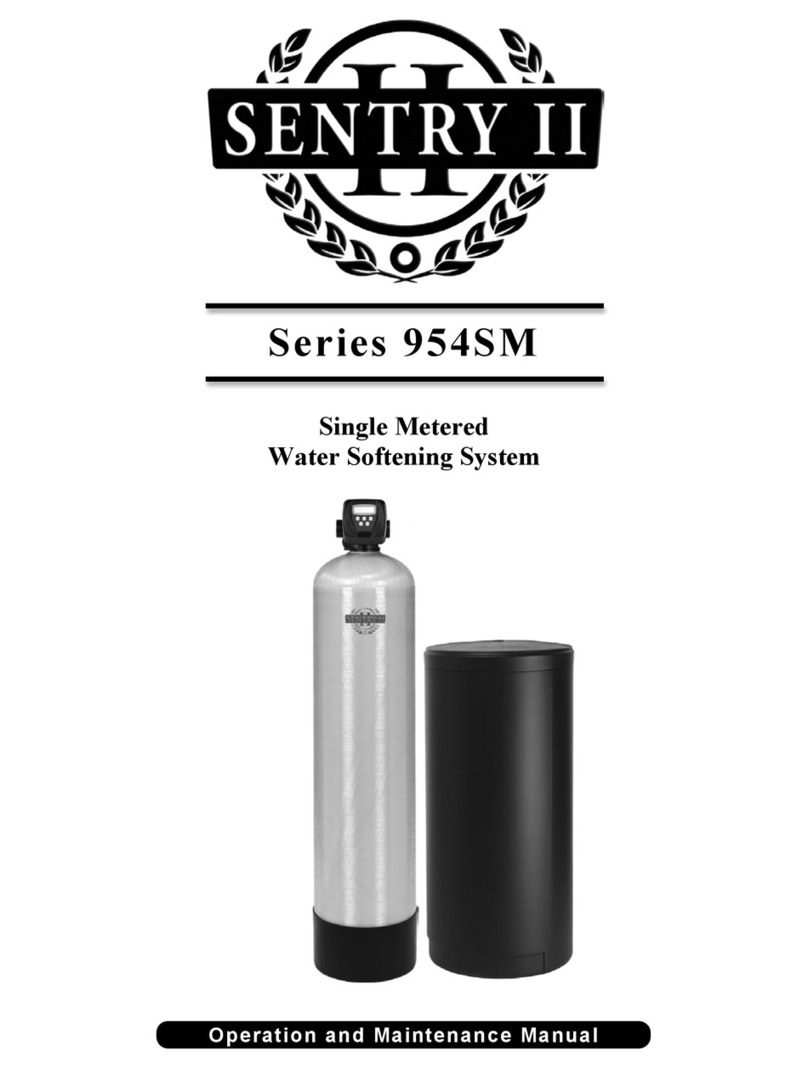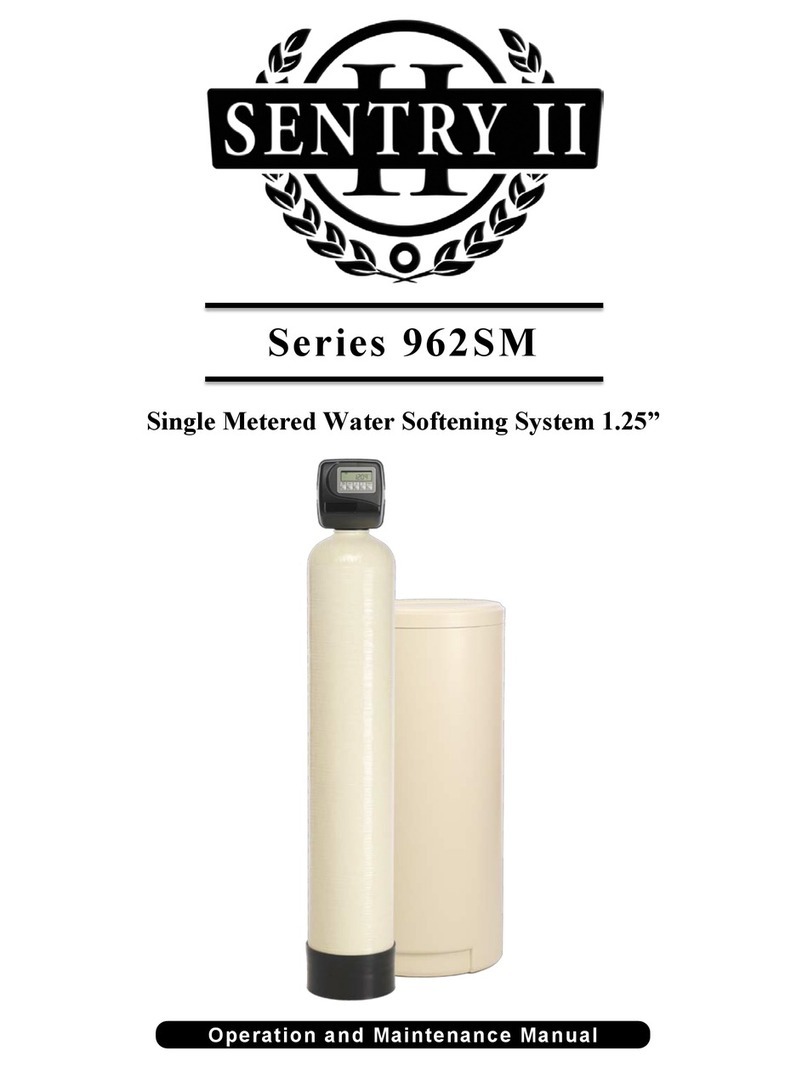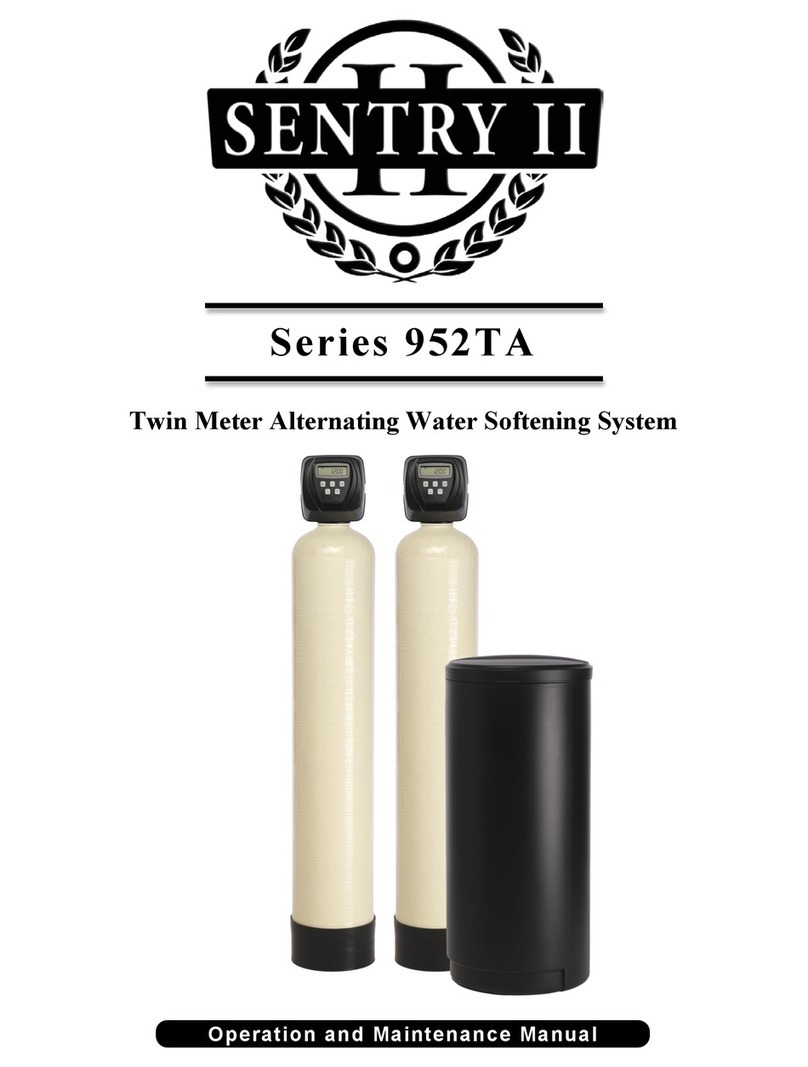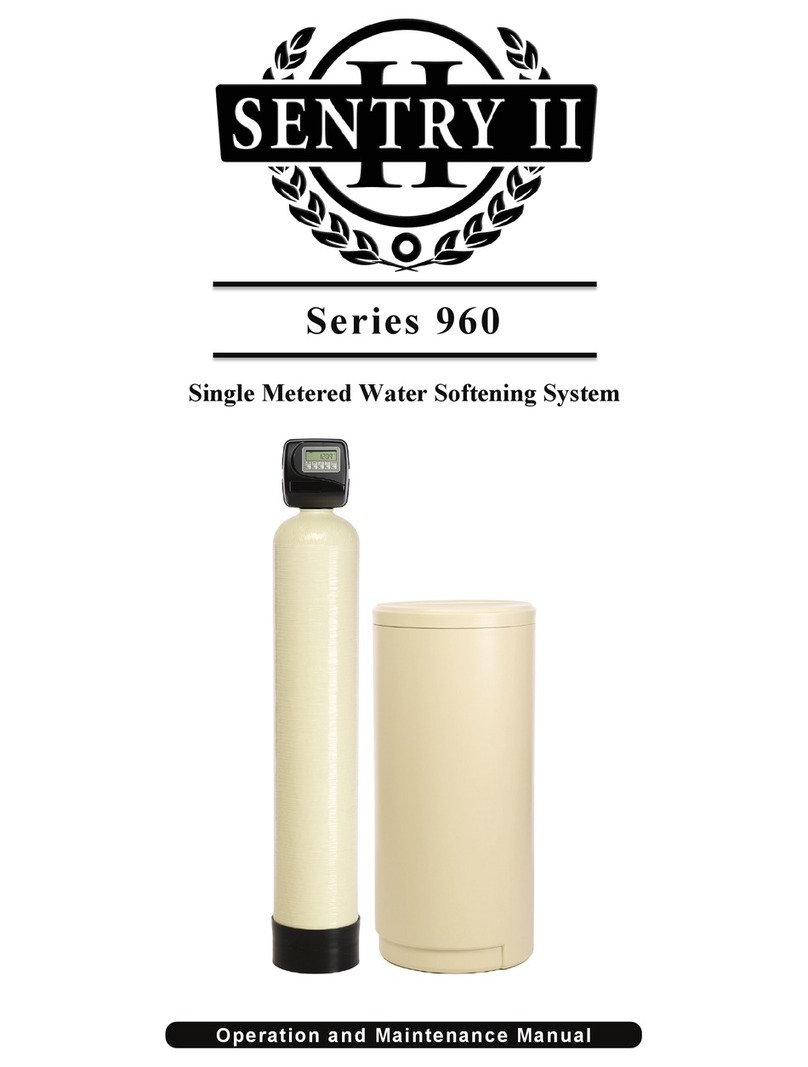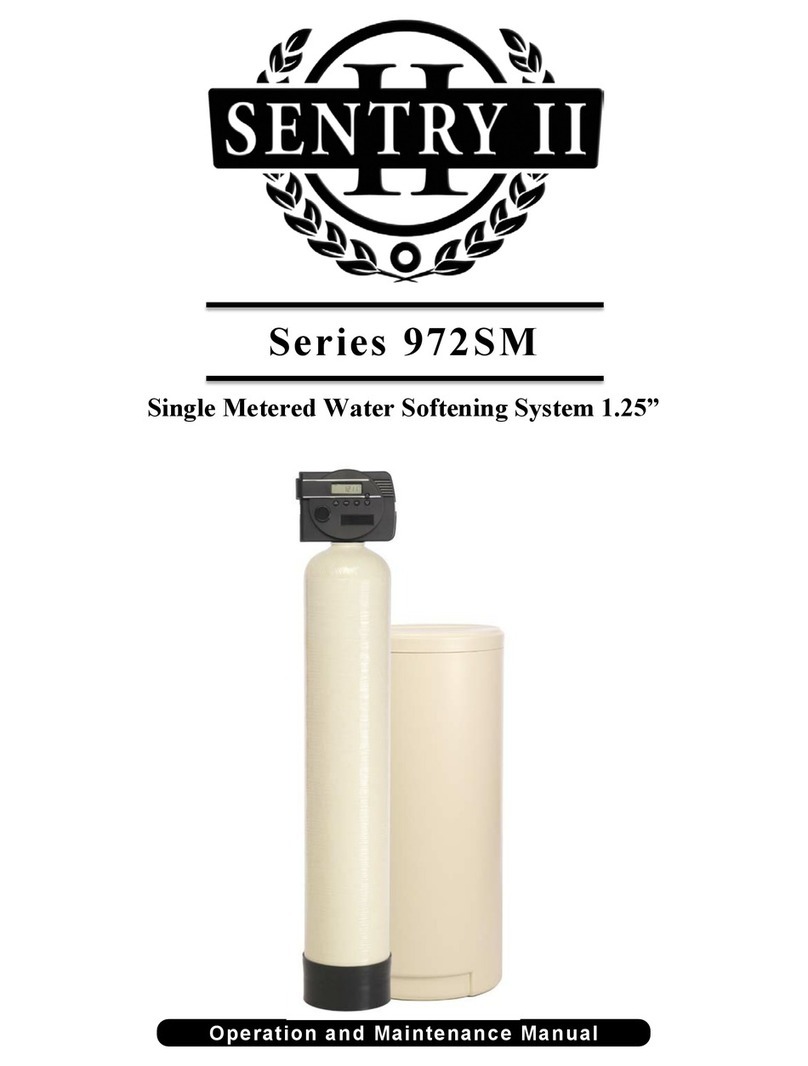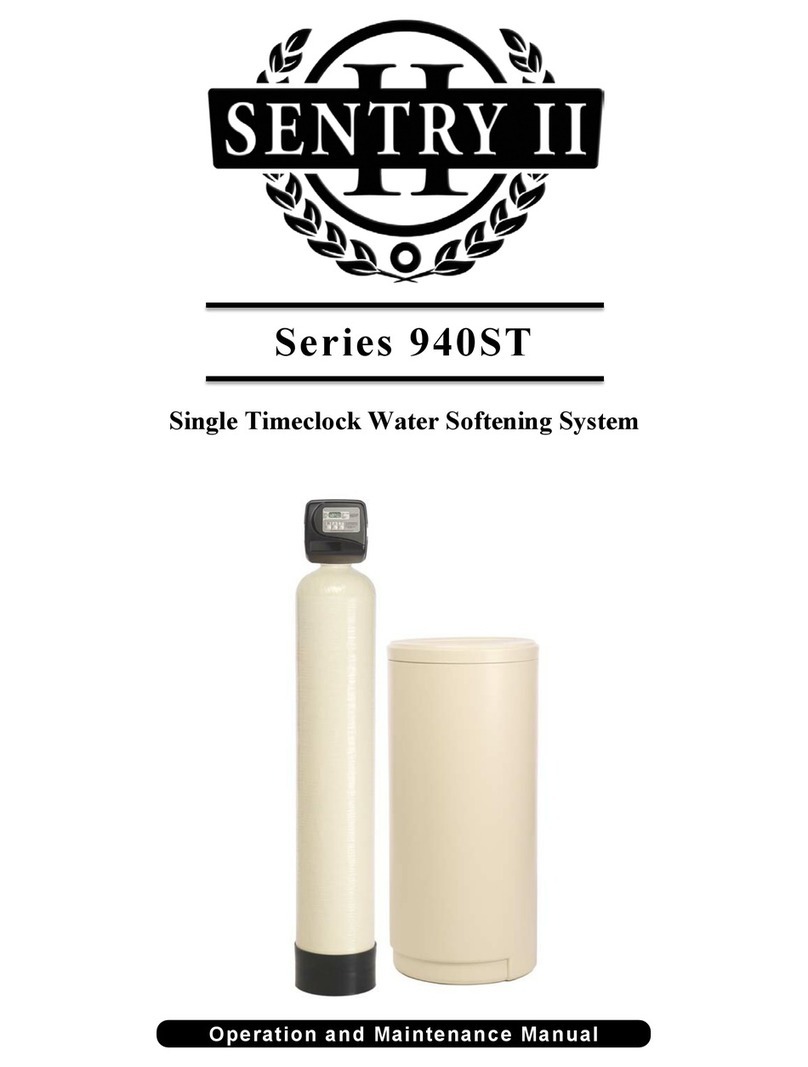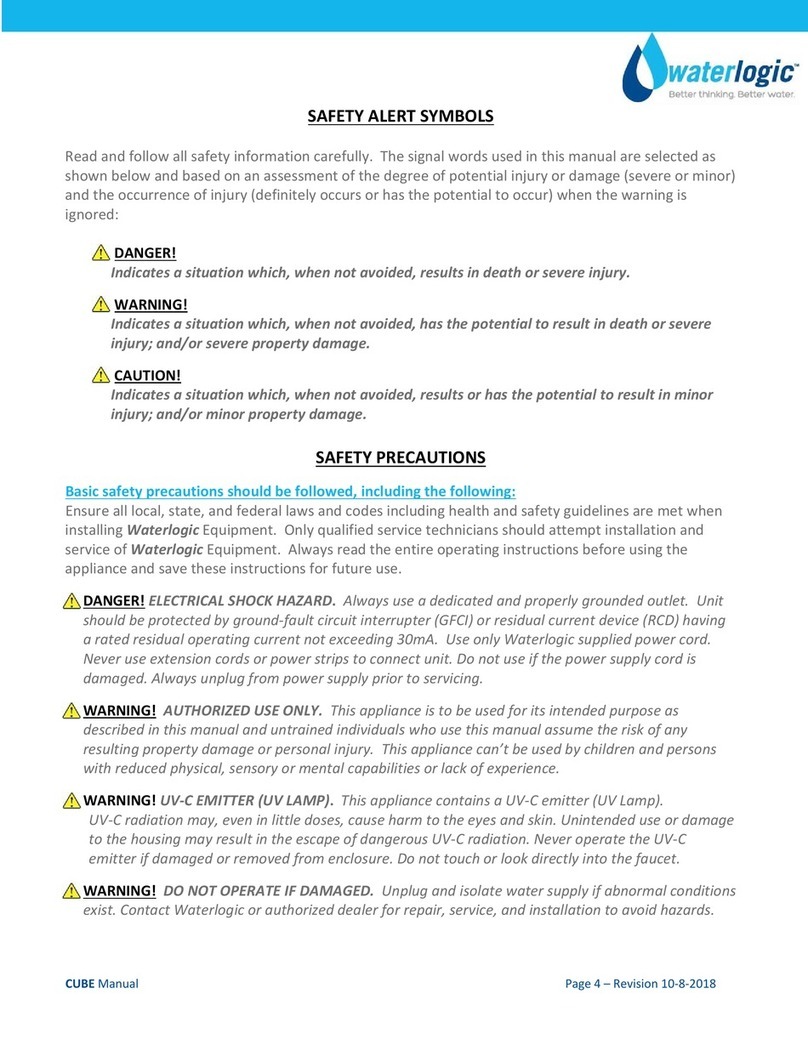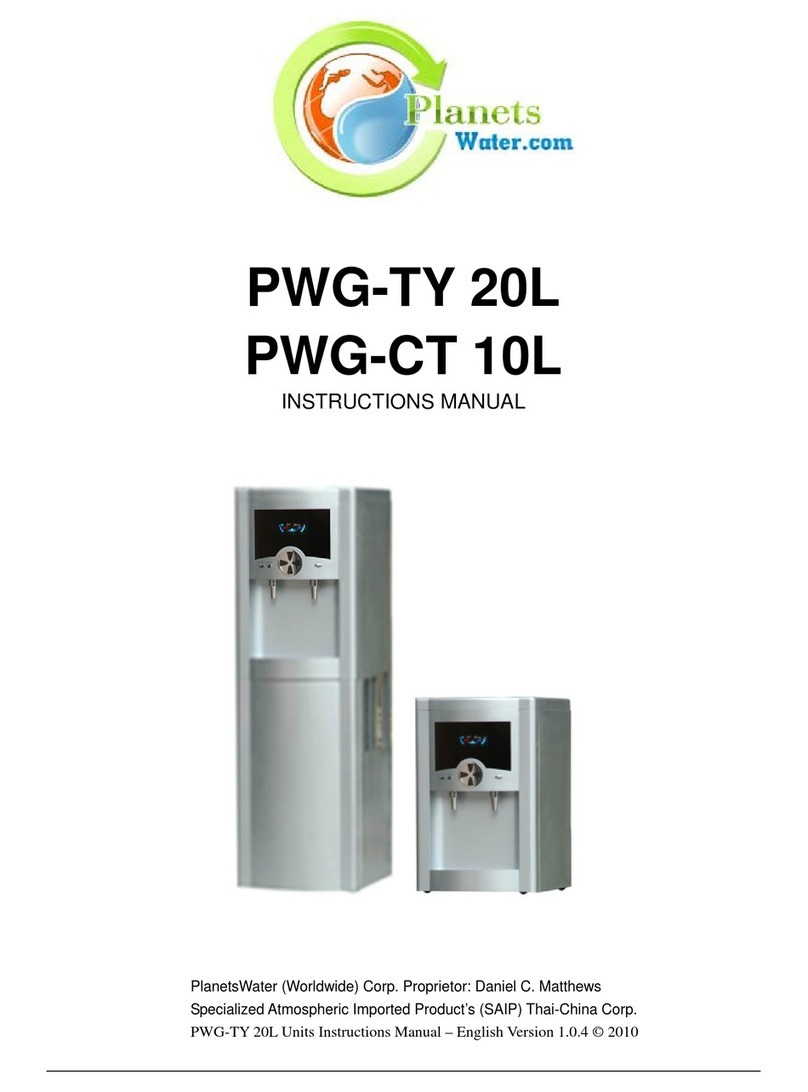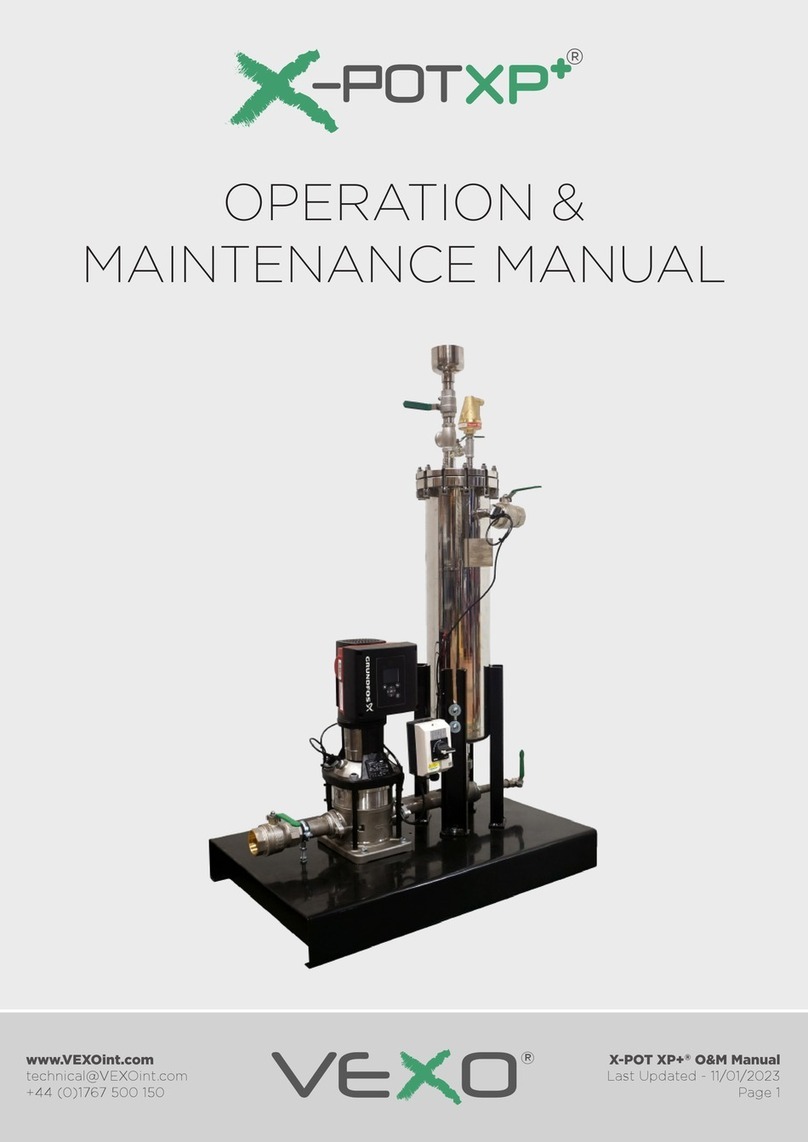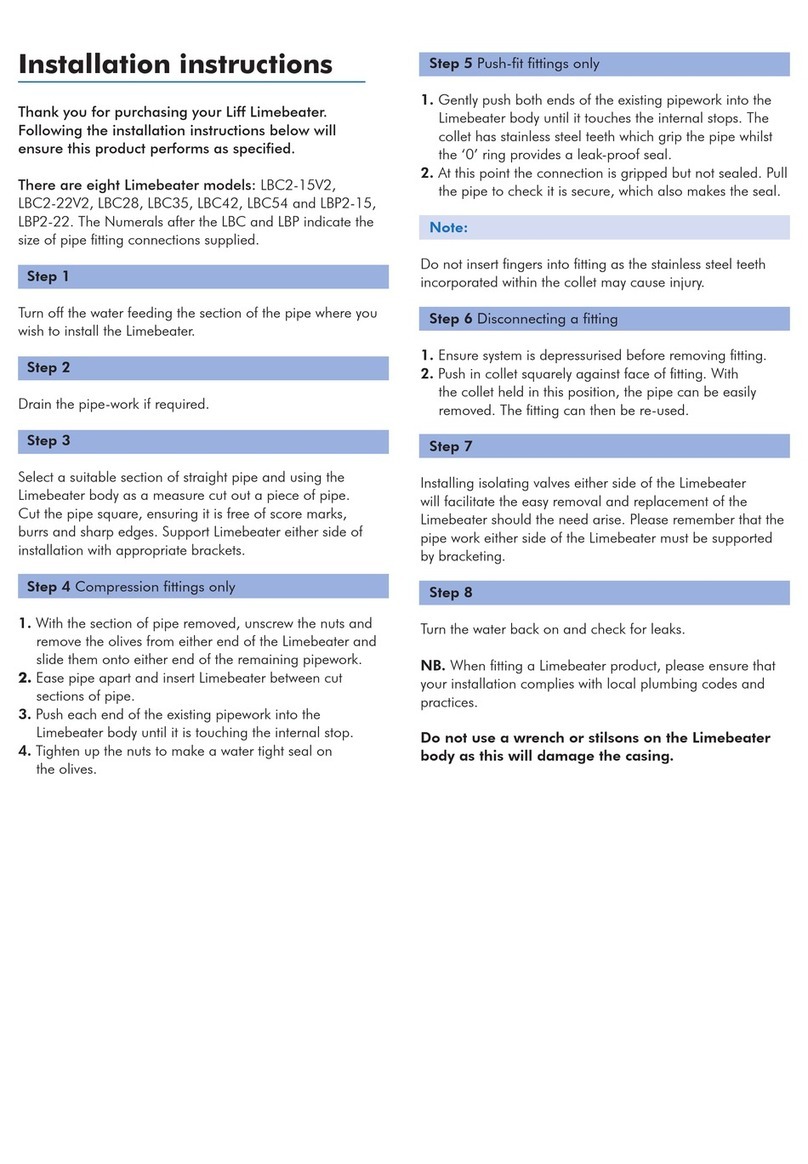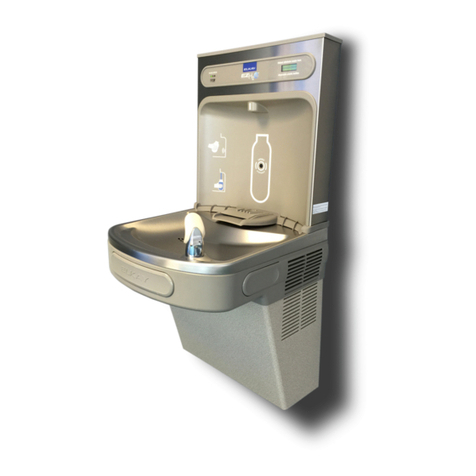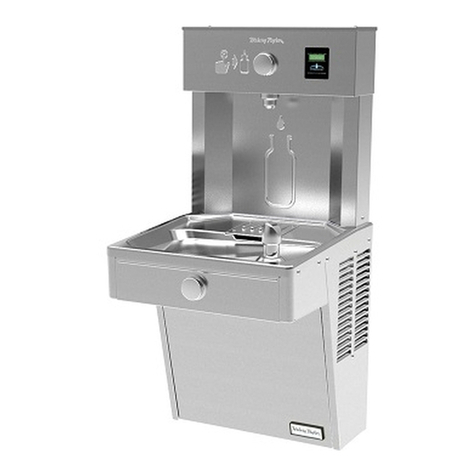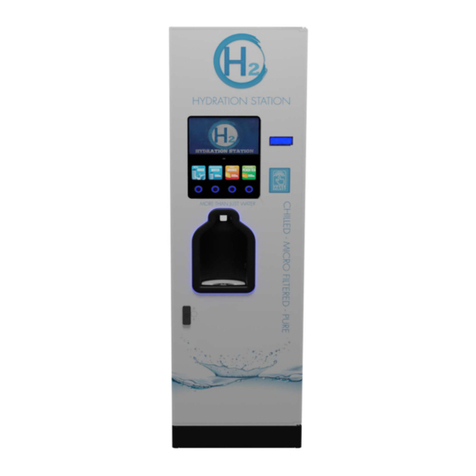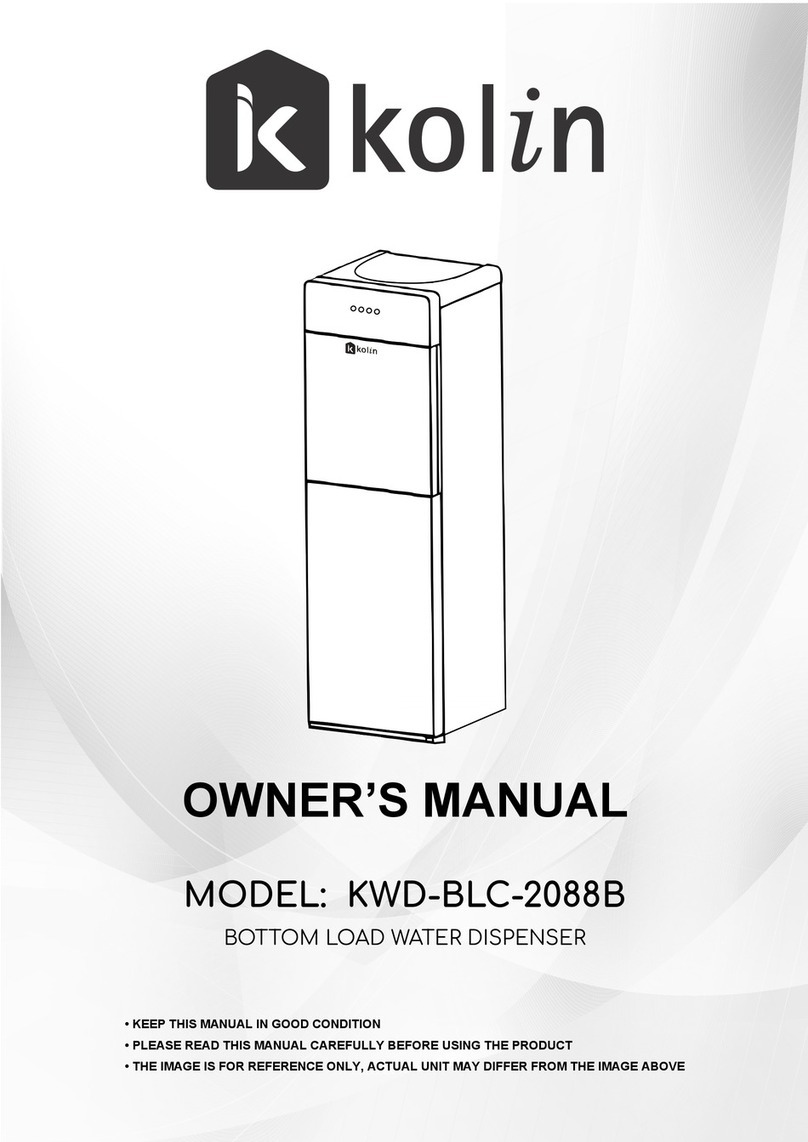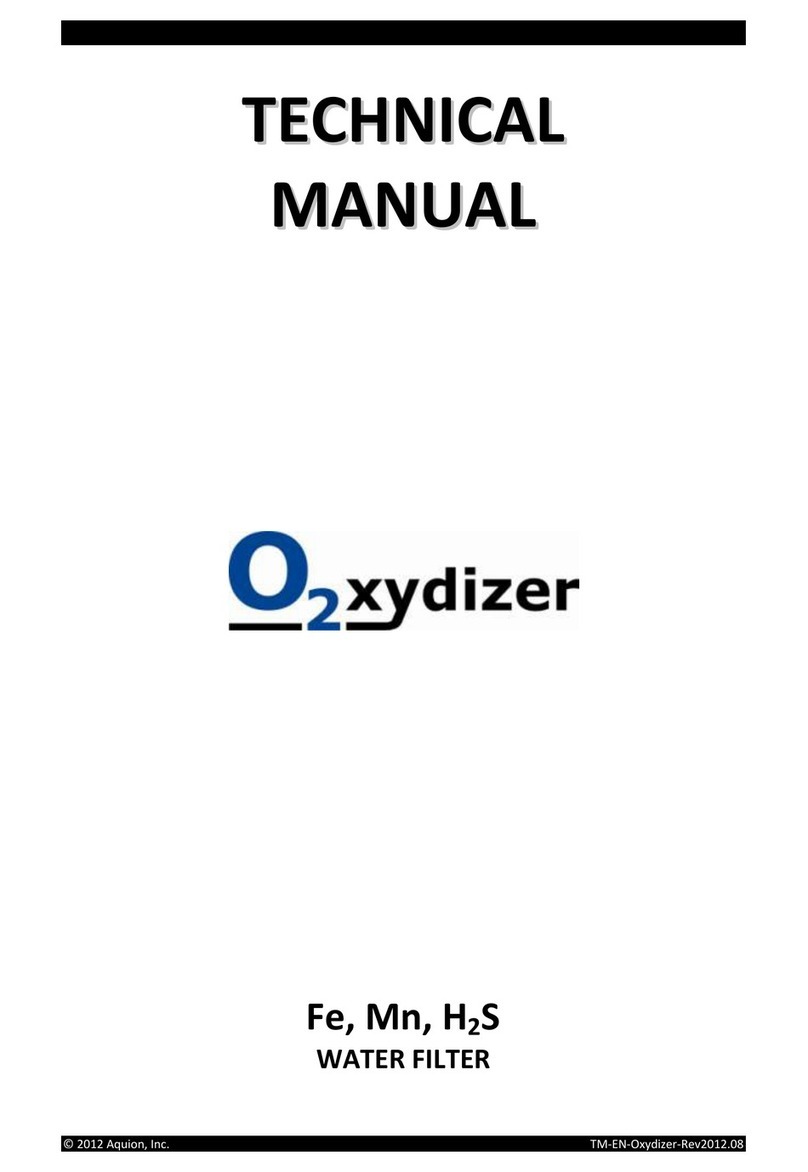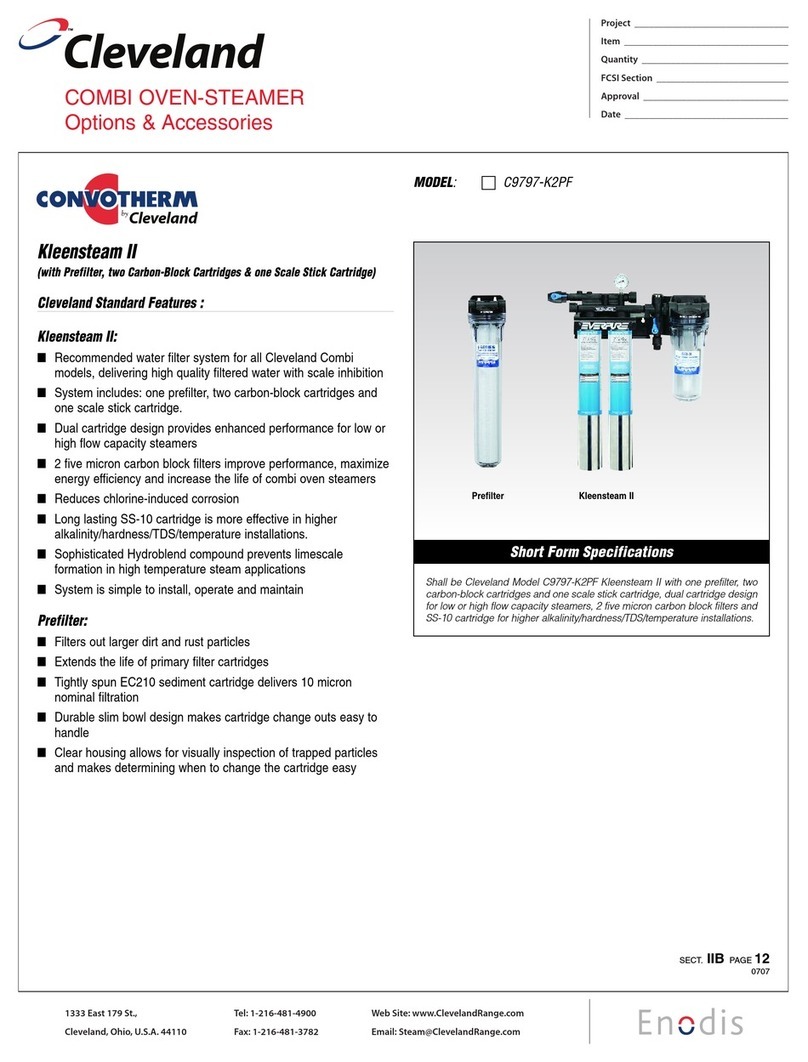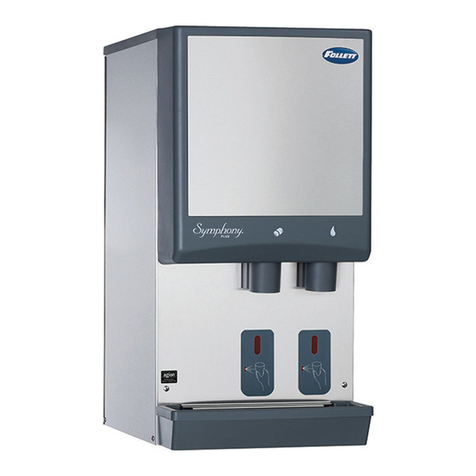
D. The Softening Process - When Ca++ or Mg++ ions have occupied most of the
reaction points, hardness will begin to slip
through the bed in increasing amounts.
This rise in hardness in the effluent is an indication that the effective capacity of the
CATION EXCHANGER has been reached. The CATION EXCHANGER must then be
regenerated to restore it to its original condition.
E. Regeneration - A solution of NaCl is applied to the CATION EXCHANGER at a
controlled rate and the softening process is reversed. The Ca++ and Mg++ ions are
driven off of the CATION EXCHANGER and replaced with Na+ ions. At the end of
regeneration, the "spent" brine is rinsed away and the REGENERATED CATION
EXCHANGER, with its reaction points again occupied by sodium ions -is again able to
soften HARD WATER.
2.2 QUALITY OF EFFLUENT
If the hard water contains less than 500 ppm (about 30 grains) of Calcium, Magnesium and
Sodium salts, all expressed as CaCO3, it will be found that the effluent from a softener will
contain an average of not more that 2 ppm actual total hardness (Zero hardness by the SOAP
TEST). However, as the total CATION concentration in the hard water increases above 500
ppm, the average hardness in the effluent will also increase proportionately.
The reason for this is that when the sodium salt - those present in the raw water plus those
formed by the exchange reactions - are present in high enough concentrations, they cause a
"back-regeneration" effect at the same time as the softening process is taking place. This
effect prevents as complete a removal of calcium and magnesium as would otherwise be
possible.
It is often possible to reduce the average hardness in the effluent below normally expected
concentrations, by using a greater amount of salt than usual for regeneration.
Normal Softening Cycle - At the start of a normal softening cycle, the hardness in the effluent
drops rapidly as the residue of hardness ions left in the bed at the end of the rinse are forced
out. The effluent hardness reaches a certain minimum value and remains at approximately
this concentration for the major part of the softening run.
2.3 CAPACITY OF ION EXCHANGER
The capacity for the removal of calcium and magnesium depends mainly upon the type of ion
exchanger that is used. It is further influenced by the amounts of hardness and sodium ions in
the raw water, and by the amount of salt used for regeneration.
A. Raw Water - The effect of the amounts of hardness and sodium ions in the raw water,
is expressed in terms of COMPENSATED HARDNESS. The hardness of the raw
water is considered to be greater than it actually is for capacity determinations,
whenever: (a) the total hardness is greater than 400 ppm (as CaCO3), or (b) the
sodium salts are over 100 ppm as (CaCO3). This "greater-than-actual" hardness is
referred to as COMPENSATED HARDNESS.
B. Salt Dosage - The capacity that will be obtained from a cation exchanger is also
determined by the amount of salt used during regeneration. The Kilograins (kgr) of
hardness that can be removed by each cubic foot of ion exchanger between
regenerations increases as more salt is used for regeneration.
At the same time, the efficiency of salt usage decreases with the higher regenerant
dosages. That is, a greater number of Kilograins of hardness are removed for each
pound of salt used at the lower salt dosages, (and consequently, at the lower
capacities). Thus, greater economy may be obtained at the expense of the number of
gallons of water softened between regenerations.




















